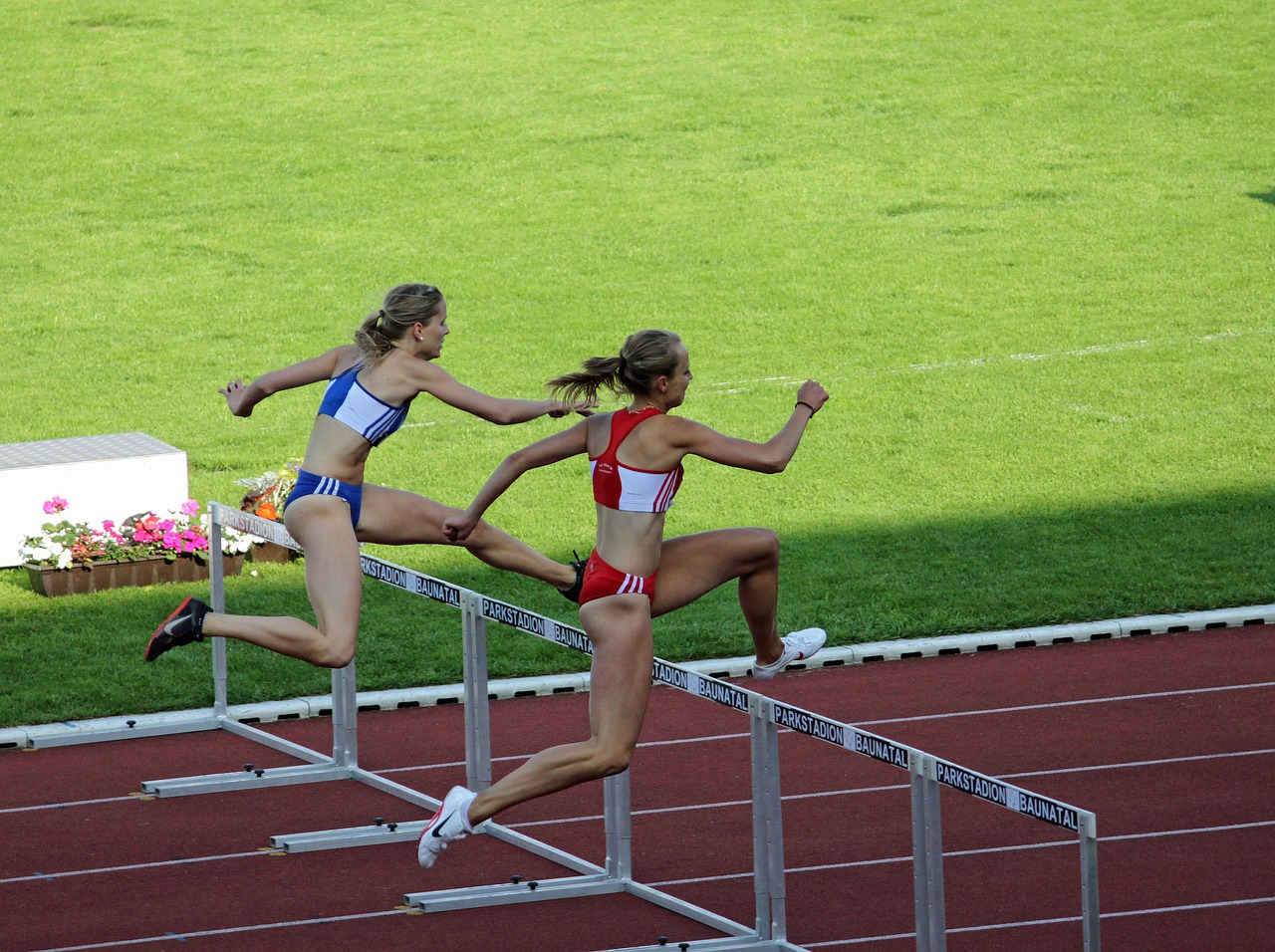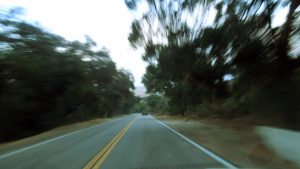This quiz is a free online preparation for the California Driver License Knowledge Test.
The questions in this test cover the following topics:
- Near Buses, Streetcars and Trolleys
- Residential and Business Districts Speed Limit
- Near animals
- Visual Search
- Scanning
- Know What Is Ahead
- Know What is At Your Side
- Know What is Behind You
- How well can you stop?
- Lane Markings
- Two Solid Double Yellow Lines
- Broken Yellow Lines
- Two Sets of Double Yellow Lines Spaced 2 Feet or More Apart
Quiz-summary
0 of 20 questions completed
Questions:
- 1
- 2
- 3
- 4
- 5
- 6
- 7
- 8
- 9
- 10
- 11
- 12
- 13
- 14
- 15
- 16
- 17
- 18
- 19
- 20
Information
There are 20 questions in this quiz, you can check your answer after each question by clicking the “check” box on the bottom. You can also learn by just reviewing the questions and answers by clicking the “review question” on top.
To start click the “start quiz” below.
You have already completed the quiz before. Hence you can not start it again.
Quiz is loading...
You must sign in or sign up to start the quiz.
You have to finish following quiz, to start this quiz:
Results
0 of 20 questions answered correctly
Your time:
Time has elapsed
You have reached 0 of 0 points, (0)
| Average score |
|
| Your score |
|
Categories
- Not categorized 0%
- 1
- 2
- 3
- 4
- 5
- 6
- 7
- 8
- 9
- 10
- 11
- 12
- 13
- 14
- 15
- 16
- 17
- 18
- 19
- 20
- Answered
- Review
-
Question 1 of 20
1. Question
The speed limit when driving past a pedestrian safety zone is?
Correct
A pedestrian safety zone is an area within the road marked by raised buttons or other markers that is set aside ONLY for pedestrians. Examples of pedestrian safety zones include bus stops where pedestrians wait safely to board a bus, trolley stops and curb ramps where pedestrians can wait safely before crossing the street.
The speed limit when driving past a pedestrian safety zone is 10 mph.
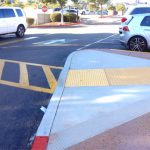
Pedestrian safety zone
Incorrect
A pedestrian safety zone is an area within the road marked by raised buttons or other markers that is set aside ONLY for pedestrians. Examples of pedestrian safety zones include bus stops where pedestrians wait safely to board a bus, trolley stops and curb ramps where pedestrians can wait safely before crossing the street.
The speed limit when driving past a pedestrian safety zone is 10 mph.

Pedestrian safety zone
-
Question 2 of 20
2. Question
If not posted, the speed limit in residential and business districts is?
Correct
Incorrect
-
Question 3 of 20
3. Question
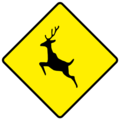
This sign means?
Correct
If you see a yellow diamond sign with animals on it, be warned that animals may be on or near the roadway. If you see animals near the roadway, slow down and proceed with caution because they may suddenly run into the road.
If you see livestock near the roadway, slow down and proceed with caution. If there is a person in charge of the animals, follow his directions.
Incorrect
If you see a yellow diamond sign with animals on it, be warned that animals may be on or near the roadway. If you see animals near the roadway, slow down and proceed with caution because they may suddenly run into the road.
If you see livestock near the roadway, slow down and proceed with caution. If there is a person in charge of the animals, follow his directions.
-
Question 4 of 20
4. Question
While driving, what does “scanning your surroundings” mean?
Correct
Constantly move your eyes, looking at all the mirrors to maintain a safe distance around your vehicle. This safe distance will allow you time to brake in case of an emergency. Constantly starring at the road in front of your vehicle is dangerous because you are not aware of hazards on your sides and behind you.
Incorrect
Constantly move your eyes, looking at all the mirrors to maintain a safe distance around your vehicle. This safe distance will allow you time to brake in case of an emergency. Constantly starring at the road in front of your vehicle is dangerous because you are not aware of hazards on your sides and behind you.
-
Question 5 of 20
5. Question
Scanning your surroundings while driving helps you see all of the following EXCEPT?
Correct
Incorrect
-
Question 6 of 20
6. Question
Fill in the blank.
To see hazards early and avoid last minute moves, scan the road _______ seconds ahead of you.
Correct
Incorrect
-
Question 7 of 20
7. Question
All of the choices are correct EXCEPT?
Before changing lanes on a multi-lane road, you should?
Correct
Incorrect
-
Question 8 of 20
8. Question
What is the “3 second rule” used for?
Correct
The “3 second rule” is used to prevent you from tailgating the car in front of you. when the vehicle ahead of you passes a certain point, such as a sign, you start to count “one-thousand-one, one-thousand-two, one thousand three.” This takes about 3 seconds. If you pass the same point before you finish counting, you are too close to the car ahead of you (you are tailgating).
Incorrect
The “3 second rule” is used to prevent you from tailgating the car in front of you. when the vehicle ahead of you passes a certain point, such as a sign, you start to count “one-thousand-one, one-thousand-two, one thousand three.” This takes about 3 seconds. If you pass the same point before you finish counting, you are too close to the car ahead of you (you are tailgating).
-
Question 9 of 20
9. Question
You should allow for more room between you and the car ahead of you when?
Correct
You should allow for 4 or more seconds ahead of you when:
-
a tailgater is behind you
-
driving on slippery roads
-
the driver behind you wants to pass you
-
following large vehicles that block your view ahead
-
towing a trailer or carrying heavy loads
-
following motorcycles or bicycles on gravel, wet or icy roads and metal surfaces (bridge gratings, railroad tracks). Because motorcyclists and bicyclists can fall on these surfaces.
-
Merging onto a highway.
-
Following a school bus, bus or a vehicle carrying hazardous loads, at railroad crossings because they are required to stop at the crossing.
Incorrect
You should allow for 4 or more seconds ahead of you when:
-
a tailgater is behind you
-
driving on slippery roads
-
the driver behind you wants to pass you
-
following large vehicles that block your view ahead
-
towing a trailer or carrying heavy loads
-
following motorcycles or bicycles on gravel, wet or icy roads and metal surfaces (bridge gratings, railroad tracks). Because motorcyclists and bicyclists can fall on these surfaces.
-
Merging onto a highway.
-
Following a school bus, bus or a vehicle carrying hazardous loads, at railroad crossings because they are required to stop at the crossing.
-
Question 10 of 20
10. Question
Choose the correct answer:
When reaching an intersection with or without a traffic light or stop sign you should?
Correct
Because there are drivers who DO NOT obey traffic lights or other signs at intersections, you should:
- First look to the left because vehicles coming from this direction are closer.
- Look to the right.
- Then look left again, in case there are vehicles, pedestrians or bicycles you missed the first time.
Incorrect
Because there are drivers who DO NOT obey traffic lights or other signs at intersections, you should:
- First look to the left because vehicles coming from this direction are closer.
- Look to the right.
- Then look left again, in case there are vehicles, pedestrians or bicycles you missed the first time.
-
Question 11 of 20
11. Question
It is important to maintain space, a cushion, on each side of your vehicle to prevent accidents. All of the following help to maintain this space Except?
Correct
The following help maintain space alongside your vehicle and prevent accidents:
- On multi-lane roads, avoid driving alongside vehicles, drive either ahead or behind.
- Even though you have the right of way, try to make room for vehicles merging into your lane.
- Maintain space when driving alongside parked vehicles because a door may open, someone may step out in between them or a vehicle may pull out suddenly.
- Leave plenty of room between your vehicle, motorcyclists and bicyclists.
- Avoid staying in another driver’s blind spot.
Incorrect
The following help maintain space alongside your vehicle and prevent accidents:
- On multi-lane roads, avoid driving alongside vehicles, drive either ahead or behind.
- Even though you have the right of way, try to make room for vehicles merging into your lane.
- Maintain space when driving alongside parked vehicles because a door may open, someone may step out in between them or a vehicle may pull out suddenly.
- Leave plenty of room between your vehicle, motorcyclists and bicyclists.
- Avoid staying in another driver’s blind spot.
-
Question 12 of 20
12. Question
For all of the following instances it is very important to check behind you EXCEPT?
Correct
- When changing lanes you should look back in the rear view mirror, side mirror and over your shoulder to check if there are no vehicles in the lane you want to enter.
- Check your mirrors when you are turning into a side road, reducing your speed and preparing to turn into a parking place.
- Check your mirrors when driving down a steep hill, because large trucks can gather speed quickly and may not be able to stop.
- When backing up, before backing turn and look over your right and left shoulder and then do the same when backing up.
Incorrect
- When changing lanes you should look back in the rear view mirror, side mirror and over your shoulder to check if there are no vehicles in the lane you want to enter.
- Check your mirrors when you are turning into a side road, reducing your speed and preparing to turn into a parking place.
- Check your mirrors when driving down a steep hill, because large trucks can gather speed quickly and may not be able to stop.
- When backing up, before backing turn and look over your right and left shoulder and then do the same when backing up.
-
Question 13 of 20
13. Question
You should turn on your headlights during the day if?
Correct
Incorrect
-
Question 14 of 20
14. Question
Fill in the blank:
A vehicle driving on dry pavement at a speed of 55 mph that has good tires and good brakes will take about ______ feet to come to a complete stop.
Correct
Incorrect
-
Question 15 of 20
15. Question
Fill in the blank:
A vehicle driving on dry pavement at a speed of 35 mph, that has good tires and good brakes will take about ______ feet to come to a complete stop.
Correct
Incorrect
-
Question 16 of 20
16. Question
Fill in the blanks:
Two parallel solid yellow lines mark the ________ of a road used for two way traffic and it indicates a ________.
-
Question 17 of 20
17. Question
When driving on a road with two yellow lines in the center and the yellow line on your side is not solid, but is broken into strips, it means that?
Correct
Incorrect
-
Question 18 of 20
18. Question
You are allowed to cross a double yellow line in all of the following instances EXCEPT?
Correct
Incorrect
-
Question 19 of 20
19. Question
Two sets of double yellow lines that are separated by 2 or more feet and are located in the center of a road is?
Correct
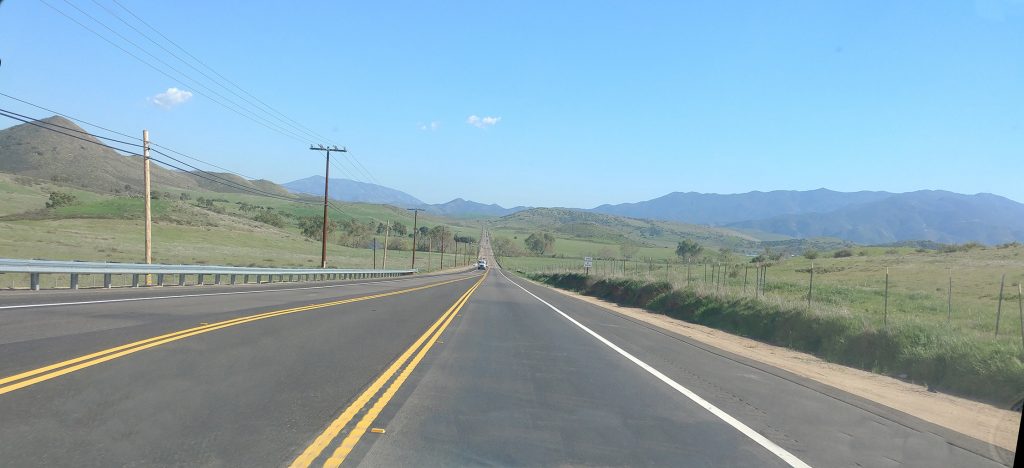
Two sets of double yellow lines in the center of the road.
Incorrect

Two sets of double yellow lines in the center of the road.
-
Question 20 of 20
20. Question
All of the following are true regarding two sets of double yellow lines, separated by 3 or more feet, EXCEPT?
Correct
Incorrect
Below is a link to the site contents page and next test:
California Driver License Practice Test No. 8
If you want to create your own website and are looking for a web hosting service, I recommend Biz.nf. I have been their customer for more than 5 years, they are a user friendly server, have very affordable prices, excellent support and they offer free web hosting (so you can try them out for free).
You can signup with them by clicking on the link below.
© 2018 – 2024, tredmate.com. All rights reserved.
